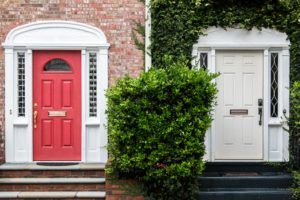 Congratulations! You’ve made the wise decision of purchasing a home. Buying a home might be the single largest financial transaction of your lifetime (no pressure), so it’s important to do your homework and to be prepared. It’s an exciting time, but it’s not without its potential pitfalls. Some of these mistakes can cost you dearly if you’re not aware. For example, if you have no idea how much to budget for closing costs, you might have get down on your hands and knees and beg the in-laws for a loan at the eleventh hour – or the deal might not close at all. (Not a good way to begin your journey as a homeowner.)
Congratulations! You’ve made the wise decision of purchasing a home. Buying a home might be the single largest financial transaction of your lifetime (no pressure), so it’s important to do your homework and to be prepared. It’s an exciting time, but it’s not without its potential pitfalls. Some of these mistakes can cost you dearly if you’re not aware. For example, if you have no idea how much to budget for closing costs, you might have get down on your hands and knees and beg the in-laws for a loan at the eleventh hour – or the deal might not close at all. (Not a good way to begin your journey as a homeowner.)
Here are three common mistakes new home buyers make and how to avoid them.
Mistake #1 – Not Taking Full Advantage of Government Programs
While many Canadians would like to own a home, the single biggest hurdle is often coming up with the down payment. Let’s say you’re buying a $500,000 condo in Toronto. That means you have to come up with a down payment of at least $25,000 (five percent). This is easier said than done. If you’re paying $2,000 a month in rent, reaching your down payment goal could take years. Luckily, there’s an easier way.
To help encourage homeownership, the government offers the Home Buyers’ Plan (HBP). Under the HBP, first-time homebuyers can borrow up to $25,000 tax-free from their Registered Retirement Savings Plan (RRSP) for a down payment (If you’re buying with another first-time homebuyer, that’s a total of $50,000 you can borrow together). What makes the RRSP so powerful is that you’ll get a tax refund for your contributions, helping you reach your down payment goal sooner.
If you’re not a first-time homebuyer, the tax-free savings account (TFSA) is your best bet. Unlike the RRSP, you don’t get a tax refund from TFSA contributions, but similar to the RRSP, your money grows tax-free inside it. Where the TFSA has a leg up on the RRSP is that you don’t have to pay income tax when you withdraw your money.
Mistake #2 – Skipping the Mortgage Preapproval
Before looking at properties with your real estate agent, it’s a good idea to get preapproved for a mortgage. A mortgage preapproval tells you how much you can afford to spend on a home. Without it, you could offer $600,000 on a condo, only to find out that your lender will only approve you to spend up to $550,000. Oh-oh.
Just because your lender says that you can spend $550,000 on a home, doesn’t mean that you should. It’s a good idea to leave yourself some financial breathing room in case something were to happen. For example, you could lose your job, get sick or mortgage rates could be higher upon renewal. Wouldn’t you rather be prepared instead of being blindsided when one of these happens? I know I would!
Mistake #3 – Forgetting to Budget for Closing Costs
If you’ve never bought a home before, it’s easy to overlook closing costs. While it can be tempting to put every single penny towards your deposit and down payment to lessen the size of your mortgage, it’s important to put some money aside to cover closing costs.
How much? A good rule of thumb is to budget between 1.5 and four percent of your home’s purchase price towards closing costs. That means if you’re buying a $500,000 condo, you should be budgeting up to $20,000 towards closing costs.
The most common closing costs are land transfer tax, real estate lawyer fees and home inspection fees. Since you’re a first-time homebuyer, you may get a full or partial rebate on land transfer tax depending on the province you’re buying in.
This post was sponsored by Sun Life Assurance Company of Canada.
Sean Cooper is the bestselling author of the book, Burn Your Mortgage: The Simple, Powerful Path to Financial Freedom for Canadians, available now on Amazon and at Chapters, Indigo and major bookstores, and as an Audiobook on Amazon, Audible and iTunes.